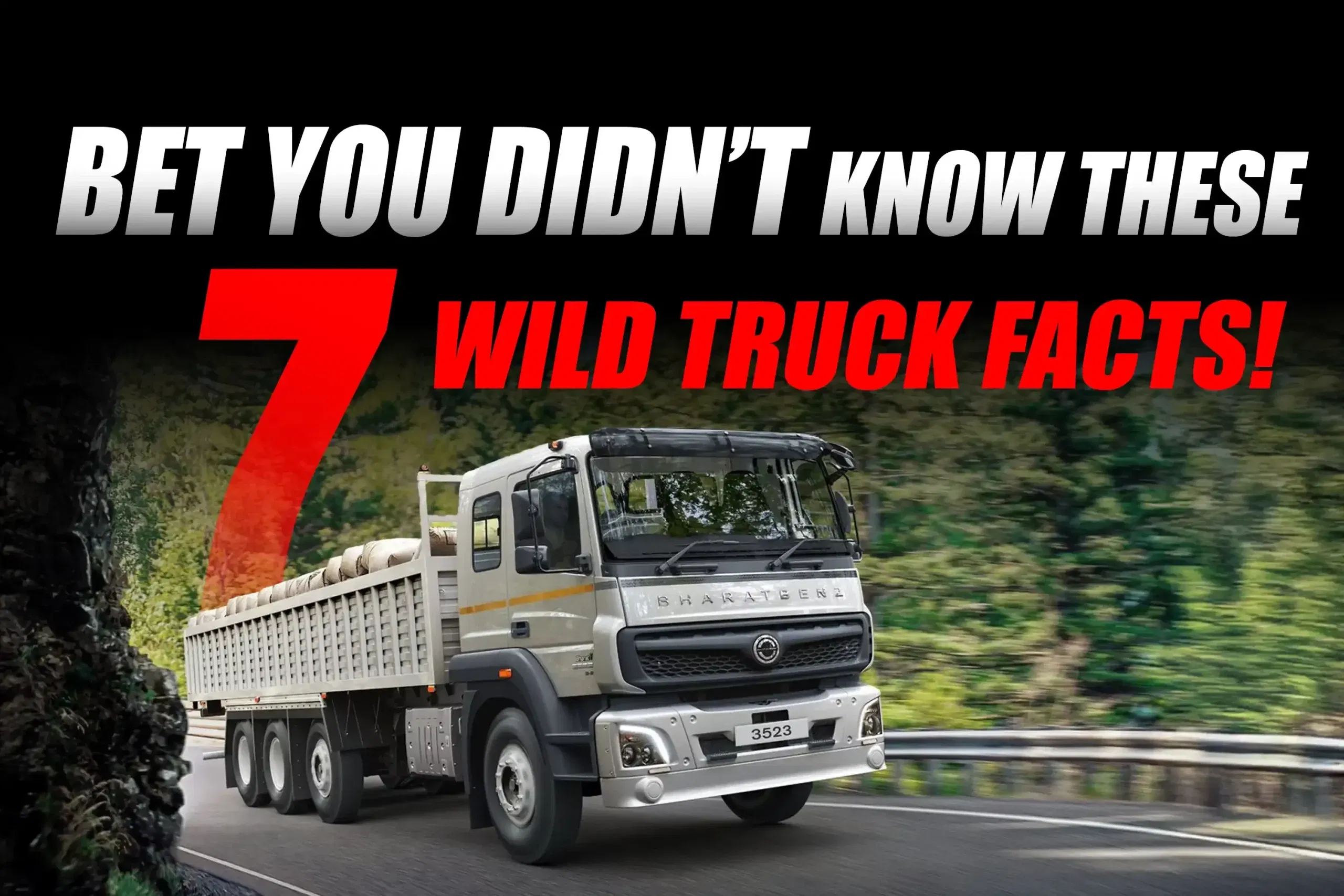Trucks make the world go round. They transport goods, link places and drive economies. But, in every truck, there's a story of history, art, resilience and technology. Here are seven amazing truck facts that illustrate how trucks impact lives and geography.
1. India Runs on 8 Million Trucks
India's logistics network relies upon over 8 million trucks that are on record. Roughly 70% of those trucks belong to truck owners running small fleets operations- usually with a minimum of 5 or fewer trucks. They are independent contractors who support this truck based economy. They transport important commodities- food, fuel and raw material- every day. Their efforts are foundational and vital to maintaining strong supply chains and ensuring that local communities can thrive economically.

2. Truck Art Is a Belief, Not Decoration
Indian truck art makes highways art galleries. Every truck is clad in vibrant paint, mirrors and designs. But these patterns are not for fashion; they are for faith. The drivers feel colors and signs protect them from ill fortune. Suspended lemon–chilli pendants or "nimbu–mirchi" on mirrors safeguard them against the nazar — evil glances. Each design is a symbol of hope and faith, making metal meaningful.

3. The Beginning of India's Truck Industry
In 1954, India commenced its commercial truck manufacturing when Tata Motors (previously Tata Engineering and Locomotive Company) began locally producing trucks with Daimler-Benz. This collaboration began India's truck industry, thus igniting the growth of domestic transport and some limited self-reliance in industry.
4. Most Indian Trucks Have "Horn OK Please" Written On Them
If you travel on the highways in India, you'll see the same phrase again and again: "Horn OK Please." It's painted audibly on the rear of many trucks. The phrase originates from WWII when "OK" meant it was safe for a driver to pass. Over the years, it became a tradition. Today, it still stands as a friendly reminder for vehicles behind the truck to keep their horn prior to passing the truck. In spite of its simplicity, this phrase became a form of identity – combining road safety with the colorful attitude of Indian trucking.

Also Read: Shaktiman Truck: A Legacy of Power and Glory
5. Truck Horns Have a Sound of Their Own
Every region in India boasts its own truck horn tune. Many horns are still manufactured by hand in small shops. One's northern horn might warble with melody, but one's southern horn might boom deep and low. For drivers, it is a sound of identity — a signal to belong on congested freeways. The horn denotes safety, emotion and occasionally, sheer habit. It is the soundtrack of travel.
6. Health Problems Are Increasing In Truck Drivers
It has been shown by research that a considerable number of truck drivers in India experience loneliness, anxiety and fatigue as a result of working extended hours, getting insufficient sleep and being isolated from their families for long periods. It has been reported that approximately 55.1 percent of drivers have impaired vision that may affect their safety and well-being.
7. Trucks Drive India’s Economy Forward
The trucking industry is the backbone of India’s logistics system, accounting for nearly 65% of the freight carried. Trucks carry products from the farm to the factory in order for supply chains to operate and economies to connect. Most life-supporting industries would collapse without trucks, showing that India is a nation that moves on trucks.
Conclusion
Trucks are more than transportation. They haul culture, courage and change. These truck facts reveal how deeply trucks shape our world, from small Indian town fleets to intelligent rigs driving global highways. The trucking industry keeps changing, mixing tradition with technology. And through all roads, turns and storms, one thing is certain — the truck never slows down.
For more articles and news, stay updated with 91trucks. Subscribe to our YouTube channel and follow us on Facebook, Instagram and LinkedIn for the latest videos and updates from the automotive world!
Related Stories:
Inside Europe’s EV Truck Boom: Key Takeaways for India’s Trucking Industry









